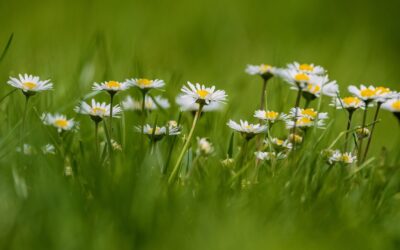Foraging – harvesting nature’s bounty
Collecting nature’s bounty from wild plant sources arguably is the most ancient of human activities. For countless millions of years of our evolution, it was essential to our survival. Even we, as ‘modern’ wo/man, i. e. Homo sapiens, subsisted on hunting and foraging for the greatest part of our existence. Agriculture only entered the picture some 12,000 years ago!
During these last 12,000 years of history, we have come to rely on overbred grains and vegetables while the wild relatives, from which they were once derived, have largely been forgotten. Only in times of extreme hunger and suffering do they re-emerge in our awareness as ‘survival food’. WWII and its aftermath was the last period in history during which large portions of the population supplemented their diet with plants gathered from the wild.
Since the mid-1990s, however, foraging has experienced a ‘renaissance’. In response to an increasingly technologized agriculture, a whole movement of foragers has sprouted. Dissatisfied with bland and nutritionally impoverished industrially-produced fruit and vegetables, foragers have turned to the age-old craft of gathering foods from the wild.
Most of simply seek a kind of culinary adventure, supplementing their regular diets with occasional wild treats. Others fear for their survival as environmental disasters loom and feel driven to learn ‘survival skills’. But some foragers go to the extreme and explore the frontiers of wild food delicacies. These are gourmet foragers, and their adventures in wild foods are a far cry from those of the survivalist.
Foraging as a craft
This section of this website explores the craft of foraging. Articles explore a variety of edible wild plants and their culinary potential. It includes recipes and tips on when, how and what to gather and how to preserve or prepare your harvest.
Caution:
Just because something is natural does not mean it is safe to eat! Some plants are edible only during a particular stage of their development, or may need special preparation to make it edible. Allergies and contamination can also be a problem. Before attempting to gather any plants for culinary purposes, make sure you can positively identify and safely distinguish it from any possible poisonous look-alikes. Please read and internalize the foraging rules before you start with any self-experimentation.
Disclaimer:
The information given in these pages is for educational purposes only.
Foraging: Evening Primrose (Oenothera biennis)
Evening Primrose is a conspicuous and frequently encountered herb, but did you know that every part of it is edible?
Foraging Wild Asparagus
Early in the spring, one of nature’s most delightful seasonal delicacies is sending up its tender shoots—wild asparagus.
Foraging Chickweed
Chickweed is a little sprawling herb with heart-shaped leaves and star-shaped flowers that belongs to the Pink family. Gardeners hate it.
What is Foraging?
What is foraging, why do people forage, what are wild edible plants and what skills do foragers need to learn?
Foraging Daisy (Bellis perennis)
Daisies are among the most common spring herbs, but did you know they are edible? This article is about foraging Daisies, and how to use them
Foraging Goutweed (Aegopodium podagraria)
Foraging goutweed is one of spring’s delights. It is plentiful, tasty and versatile! It can be used as a pot herb for soups, and fillings, or as pesto.
Sugar Maple – A Sweet Miracle
Sugar Maple is an iconic tree of the northeastern parts of the US. Its display of bright orange and red fall foliage is world-famous.
Foraging Wintercress – Barbarea vulgaris
Wintercress is winter-hardy and can be foraged during the winter. It is rich in vitamin C and A and used to be known as an ‘anti-scurvy’-herb.
Jerusalem Artichokes
Jerusalem Artichokes are the perfect edimental, spreading lovely late summer cheer and providing nourishing goodness through the winter. And they are very versatile, too!
How To Make Rose-Hip Syrup
Rose hips are packed full of vitamin C and an excellent immune system booster. Most people know the tea, but the syrup is super delicious!











